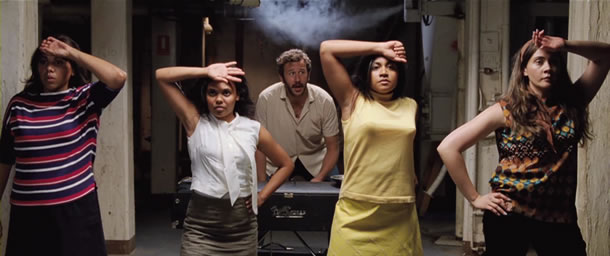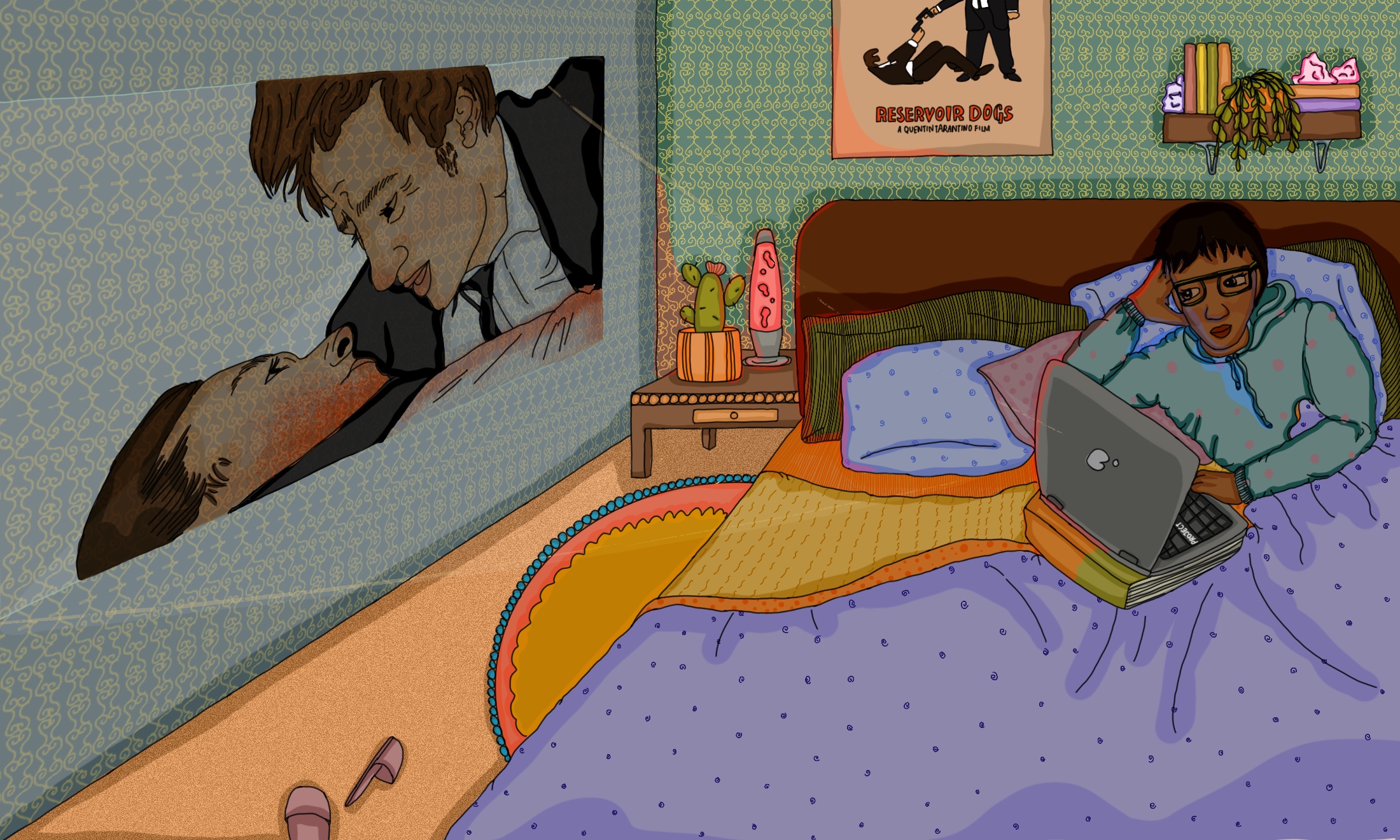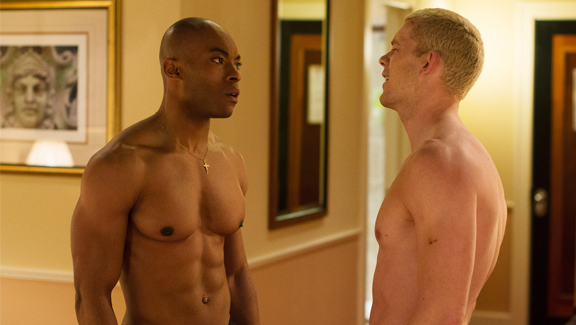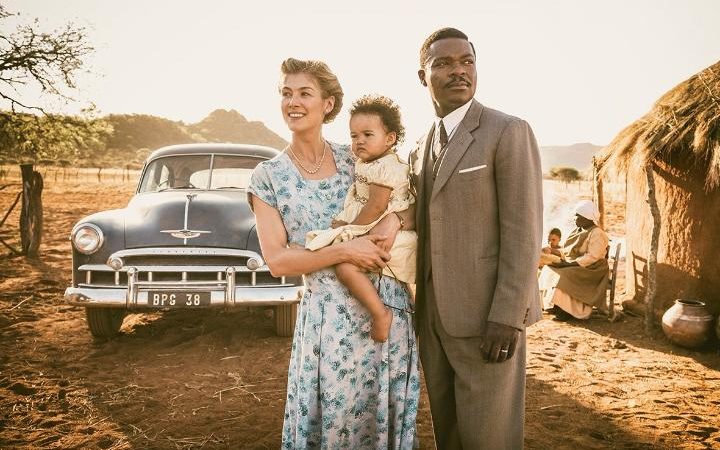
The fact that I’m doing a film club focused on underrated films about women of colour may give off (a very welcome) impression that I’ll be solely focusing on deeply independent and rarely seen films made on a shoe-string budget. However, that won’t always be the case. Although I love and relish said independent films, I find nothing wrong with occasionally turning towards the mainstream. Ryan Coogler’s recent release Creed is one of the best portrayals of a black woman, and a black couple in love, that I’ve seen. The film, made by a usually independent director, still managed to hit the mainstream as a sequel to the Rocky films, one of Hollywood’s most famous stories. So, for this gal-dem film club, I see nothing wrong with turning towards something a little more starry, in the form of the dazzling and oddly poignant The Sapphires.
You’ve probably seen The Sapphires sitting on the shelf in your local HMV in a shiny pink case. Or maybe, like myself, your nan owns a copy. Judging from these simple facts alone, it’s easy to assume that the film is a piece of inoffensive Saturday night fun. It is and it isn’t. The film tells the “true” story of three Aboriginal sisters and their white-passing cousin, who form a Supremes-esque girl group and end up touring Vietnam and performing for the troops. The group is discovered (and here are where the quotation marks come into play as it seems a little too opportunistic to put a kindly white guy in the story) by a washed up Irish ex-DJ, played by Chris O’Dowd. His appreciation of soul music frequently reaches the levels of a white boy who’s just got really into To Pimp a Butterfly. “I may be a little pale on the outside,” he quips towards the beginning of the film, “but my blood runs Negro.”
O’Dowd’s character isn’t really the focus of the film, although the prominence of his face in some promotional tools would make you think otherwise. The Sapphires came out post-Bridesmaids, so I’m sure his name helped attract a little extra money, but O’Dowd’s main job is to utter a few funny quips, drink a lot, and eventually fall in love with one of the sisters: the brilliantly fierce Gail, played by Deborah Mailman. She is resilient, though often comes across as the most boring character in the film due to the protection she holds over her younger sisters and cousin. Like Ana in my first gal-dem film club pick Real Women Have Curves, Gail is a fat black role model I was searching for in film in my formative years. But Gail is brilliant because she is strong in spirit, not because of her weight. Unlike the similarly themed Dreamgirls, in which Jennifer Hudson’s character’s weight is constantly picked up upon, Gail is fat, but it’s not the whole of her character.
Gail’s sister Cynthia is another aspirational figure in The Sapphires. She’s potentially the thirstiest woman of colour I’ve ever seen in film. Before bedding down with an aspiring beau, she strokes his face and whispers longingly, “God, you’re so beautiful”. Wherever Cynthia goes, she is on the hunt for male beauty. She’s Broad City’s Illana before Illana even existed. And it’s not just beauty in the opposite sex that she’s keen on. She’s well aware of her own looks, reminiscing on an old fiancé and sighing wistfully, “how could Jimmy not be interested in this?” whilst gazing at her reflection in a handheld mirror.
The girls’ cousin Kay, who could easily fall into yet another “tragic mullatta” role, also has a compelling story. Through Kay, who is white-passing and is stolen from her Aboriginal family as a child, we are reminded of the injustices performed against the indigenous people of Australia in a film that’s supposed to be about a nice glamorous pop band. The complete reverse of so many tragic mullatta stories in pop culture, Kay only finds closure in her fragmented identity when she reclaims and accepts her blackness. “Just so you know, I’m black,” she tells a black American soldier who shows interest in her, “I’m just a kind of pale black”.
Blackness is presented in The Sapphires in a way that I’d not thought of before seeing the film. It’s not tied to one country. When one thinks of blackness, it’s easy to think of it in an American context, or British one, maybe African or West Indian. Rarely do Aboriginal communities come to mind. But the women in The Sapphires state a claim on their blackness, which becomes even more interesting when they interact with black people throughout the film. The film presents blackness in a global context, as demonstrated by what I consider to be one of the film’s most oddly moving scenes, where the girls’ family back in Australia gather around a TV set in shocked silence to watch news footage of Martin Luther King Jr’s death.
Similarly to a film like Dirty Dancing, which discusses class, gender, sex and abortion under the guise of every gal’s favourite romantic dance flick, The Sapphires presents so many more ideas than a shiny pink DVD cover may initially suggest. It’s a funny film, full of great performances from a range of black actresses. Come for the song and dance, (which, before I forget to say, is actually pretty great), and stay for a film that presents women and blackness in a unique way.









